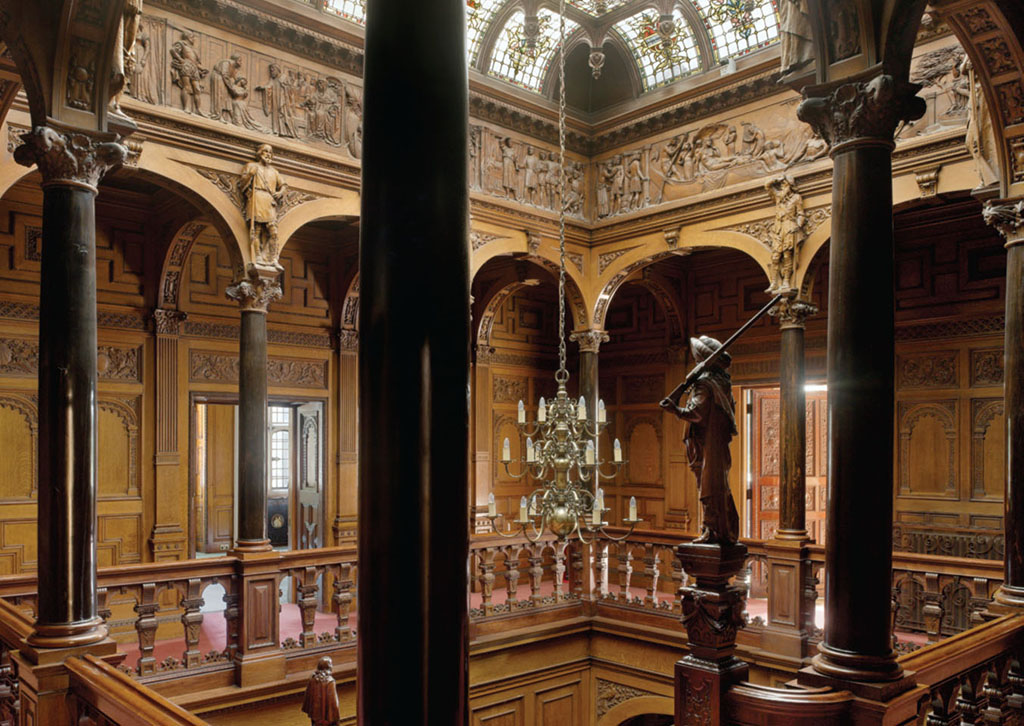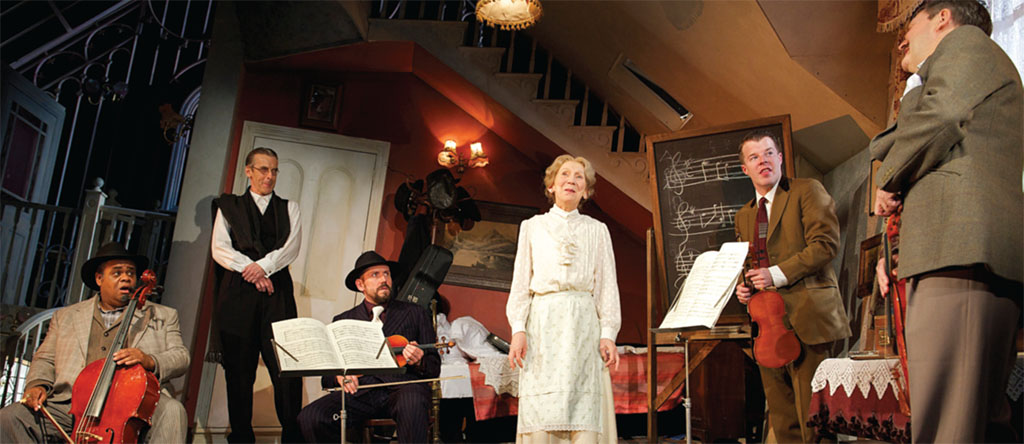
[caption id="ElizabethanMysteriestoanAlienPyramid_img1" align="aligncenter" width="231"]

I’D PASSED TWO TEMPLE PLACE, a mansion tucked discreetly away behind Temple tube station dozens of times, wondering what it was and assuming I’d never see inside it. Built for William Waldorf Aster as his grand London base, no expense was spared on construction. Like a Portland Stone jewel box, the exterior is carved and mullioned to exhaustion, the fancy wrought iron gates flanked by bronze lamps and overseen by a weather vane in the shape of Columbus’ caravel. It was one of the best sights on the Victoria Embankment, even if the public didn’t get a look in.
A couple of years ago ago, though, the house was acquired by a charity, the Bulldog Trust. After thousands of hours and millions of pounds spent restoring it to the sort of grandeur Aster insisted on, Two Temple Place is used not only as their offices, but for swanky functions. When it’s not in use, though, the landmark is open to the public—free of charge and often displaying exhibitions. The inaugural show is a collection of rarely seen William Morris paintings, textiles, sculptures and illustrations. It’s a fabulous collection, mainly borrowed from Morris’ house in Walthamstow, which is also undergoing restoration. Because many of the items have been stored in the dark, their colors glow in a way we don’t always expect from Arts&Crafts work.
I confess that my greatest curiosity concerned the building itself. Happily for me, inside is even more exquisite than the exterior. The tiny marble-mosaic entrance hall leads to a series of panelled rooms surrounding a carved oak staircase with tiny wooden statues of characters from Shakespeare and Dumas. Overhead, a stained-glass roof lets in a rainbow of color. As if a secret gem opening up with excellent exhibitions in central London for no entrance money isn’t enough, there is a teeny-tiny tea room in the parlor, complete with friendly service, fresh lemonade and home-made cake. Mmmm.
[caption id="ElizabethanMysteriestoanAlienPyramid_img2" align="aligncenter" width="1024"]

©WIL PRYCE
Way out east, though still a long way from the end of the District Line, my pal Timandra asked if I fancied joining her on a monthly candlelit tour of a hidden treasure house in one of the most bizarre settings in London. When the Elizabethan Eastbury Manor House was built, the site was deep in the Essex countryside, a short way from the Thames. It even has a little octagonal turret to watch ships coming up the river. In the 1920s Ford Motor Company built its British plant in Dagenham, though, and what resulted was one of the biggest council estates ever built. Usually, buildings in the way of giant projects are just bulldozed, but nobody touched Eastbury. So the house nowadays is surrounded, right up to the front gate, by a ring of 1930s council houses stretching for miles on end.
Eastbury has been in and out of favor since it was built, and it’s not without notoriety: Legend even claims the Gunpowder Plot was hatched there. It’s a bit of an ugly duckling for the National Trust, which bought it in 1917 and lease it out to the local council. In recent years, however, finally both money and time are being spent on the place, and an army of volunteers joins the small, enthusiastic staff to bring the place back to life again.
The excitement of the two volunteers in Elizabethan dress, who led our night-time candlelit tour, was palpable. Each room was described with the joy a proud parent shows at the end-of-school concert, because so much of the investigation has been done by themselves and their compatriots. Everything, from the rafters to what’s left of the garden, is being investigated for clues about this mysterious house. They are most proud of a rare, renaissance mural uncovered a few years ago, but hope to find more. The talk was peppered with a “come and join us in the archives” zeal that was infectious. I might do just that.
BACK IN THE CENTER OF TOWN: Tony and I were taking our parents to the theater. The West End’s enjoying a boom at the moment, despite the seemingly impossible combination of recession and near-obscene ticket prices. There are some incredible musicals out there, though admittedly most are tried and tested old favorites, but there are also new plays. We were intrigued by an adaptation of a classic Ealing comedy, not least because its writer is a favourite of mine. Graham Linehan is best known for comedies like Father Ted and The IT Crowd, and I was keen to see what he’d do with The Ladykillers.
[caption id="ElizabethanMysteriestoanAlienPyramid_img3" align="aligncenter" width="1024"]

MANUEL HARLAN
THIS MONTH’S CONTACTS
St. Anne’s Church, Limehouse
www.stanneslimehouse.org
Two Temple Place
www.twotempleplace.org
Eastbury Manor House
www.lbbd.gov.uk/MuseumsAndHeritage/EastburyManorHouse/Pages/Home2.aspx
The Ladykillers
www.theladykillers.co.uk
Wahaca
www.wahaca.co.uk
It has a killer cast, headed by Peter Capaldi from The Thick of It, and James Fleet from The Vicar of Dibley. I was most intrigued to see how Clive Rowe, London’s best-known pantomime dame, would fare out of a frock (as, I’m guessing, were the guys at the Hackney Empire where he normally does drag-duty, and who must have missed him sorely this year). I will admit my expectations were rather high.
There are loads of laughs. The first act, especially, is fast-moving and inventive, and the stellar cast do the very silly gags appropriate justice. I particularly liked the car chase, done vertically with Matchbox toys, and the way the set was so permanently wonky that I found myself reeling in my seat. But the second act was slower and the deaths could have been more exciting, given that everyone knew they were coming. I came out having enjoyed it a lot, but never having quite forgotten the sheer creepiness of Alec Guinness’s hollow-rimmed eyes.
There’s always that where-on-earth-are-we-going-to-eat moment in the West End, especially with parents in tow. So many eateries are really not up to scratch, stupidly expensive or a combination of both. But I have to say I’ve been enjoying the Mexican “market eating” of Wahaca, a better-than-average chain that seems to be in the right place at the right time. I first discovered it at the new mall at Stratford, overlooking the Olympic site, but I’ve since been to the Soho branch in Wardour Street, just down the road from The Ladykillers, several times. It has a fresh, funky feel, the décor in each branch being created by various street artists, and the menu is constantly revised to take advantage of what’s fresh and what the chefs are thinking at the time. The best thing to do is to order a few dishes then order more if you’re still hungry. It’s a relaxed, enjoyable meal every time. My one caveat—don’t bother with the wine.
ALL SORTS OF STRANGE THINGS have been written about the great stone pyramid that lies, almost forgotten, in the churchyard at St. Anne’s in Limehouse. Perhaps it’s because the church was designed by the capital’s most mysterious architect, Nicholas Hawksmoor; perhaps it just has a shape that conspiracy theorists love to associate with everything from early Freemasons to alien invasions. That pyramid has been shoehorned into practically every East End ley-line I’ve ever seen and every paranormal website seems to have some kind of sinister take on it. And I have to admit it is splendidly incongruous. I love trying to spot it from the DLR, tucked away behind the high brick walls surrounding the church, in a tiny remaining part of Georgian Limehouse, not far from the start of Regents Canal.
[caption id="ElizabethanMysteriestoanAlienPyramid_img4" align="aligncenter" width="619"]

SANDRA LAWRENCE
One Sunday, Tony and I decided to see it up close once and for all.We took our bikes through he foot tunnel at Greenwich, up the North Thames Path and fiddled our way through the narrow, cobbled streets with their hooded doorways and carved details.
St. Anne’s was one of the 50 new churches commissioned after the Great Fire. Most were designed by Sir Christopher Wren, but a few were given to other architects. Nicholas Hawksmoor built several, all of which were idiosyncratic, architecturally superb, but not a little creepy. St. Anne’s is typical of his work, not one of his best, being a bit blocky for my taste, but all Hawksmoor churches are a joy to behold, especially on a sunny spring morning. And there’s no doubting his love of pyramids. Castle Howard, Christ Church in Spitalfields and St. George in Bloomsbury all have pyramids as major features, and the example mouldering in the graveyard at Limehouse is very similar. We walked all around it; it’s definitely one of his. It has no entrance, no inscription, simple geometric shapes and a generic crest. It could be anyone’s tomb. Perhaps it contains a mummy. Or a vampire. Or it came from Outer Space.
Of course, it didn’t. Architectural diagrams of the time show it to be a roof decoration Hawksmoor decided not to use after all, and no one could be bothered to cart away. The “builder’s mess” is now Grade II listed.
Next time, I’ll be taking tea beneath the world’s favorite clipper, embracing the current craze for Restoration drama and finding out how Kensington Palace has scrubbed up.





Comments